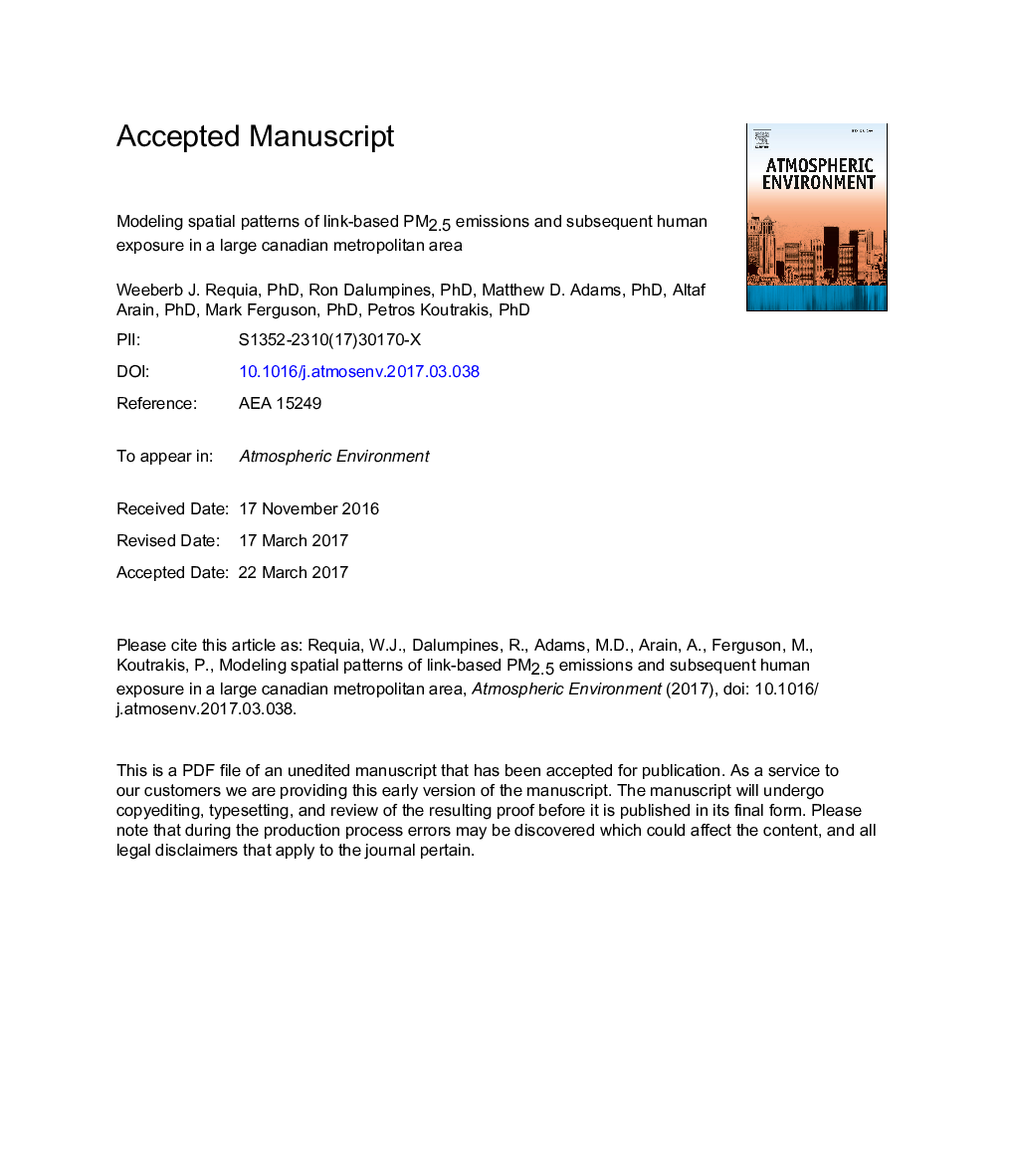| کد مقاله | کد نشریه | سال انتشار | مقاله انگلیسی | نسخه تمام متن |
|---|---|---|---|---|
| 5753309 | 1620316 | 2017 | 25 صفحه PDF | دانلود رایگان |
عنوان انگلیسی مقاله ISI
Modeling spatial patterns of link-based PM2.5 emissions and subsequent human exposure in a large canadian metropolitan area
دانلود مقاله + سفارش ترجمه
دانلود مقاله ISI انگلیسی
رایگان برای ایرانیان
کلمات کلیدی
موضوعات مرتبط
مهندسی و علوم پایه
علوم زمین و سیارات
علم هواشناسی
پیش نمایش صفحه اول مقاله

چکیده انگلیسی
Understanding the relationship between mobile source emissions and subsequent human exposure is crucial for emissions control. Determining this relationship over space is fundamental to improve the accuracy and precision of public policies. In this study, we evaluated the spatial patterns of link-based PM2.5 emissions and subsequent human exposure in a large Canadian metropolitan area - the Greater Toronto and Hamilton Area (GTHA). This study was performed in three stages. First, we estimated vehicle emissions using transportation models and emission simulators. Then we evaluated human exposure to PM2.5 emissions using the Intake fraction (iF) approach. Finally, we applied geostatistical methods to assess spatial patterns of vehicle emissions and subsequent human exposure based on three prospective goals: i) classification of emissions (Global Moran's I test), ii) level of emission exposure (Getis-Ord General G test), and; iii) location of emissions (Anselin Local Moran's I). Our results showed that passenger vehicles accounted for the highest total amount of PM2.5 emissions, representing 57% emissions from all vehicles. Examining only the emissions from passenger vehicles, on average, each person in the GTHA inhales 2.58Â ÃÂ 10â3Â ppm per day. Accounting the emissions from buses and trucks, on average each person inhales 0.12Â ÃÂ 10â3 and 1.91Â ÃÂ 10â3Â ppm per day, respectively. For both PM2.5 emissions and human exposure using iF approach, our analysis showed Moran's Index greater than 0 for all vehicle categories, suggesting the presence of significant clusters (p-value <0.01) in the region. Our study indicates that air pollution control policy must be developed for the whole region, because of the spatial distribution of housing and businesses centers and inter-connectivity of transportation networks across the region, where a policy cannot simply be based on a municipal or other boundaries.
ناشر
Database: Elsevier - ScienceDirect (ساینس دایرکت)
Journal: Atmospheric Environment - Volume 158, June 2017, Pages 172-180
Journal: Atmospheric Environment - Volume 158, June 2017, Pages 172-180
نویسندگان
Weeberb J. PhD, Ron PhD, Matthew D. PhD, Altaf PhD, Mark PhD, Petros PhD,